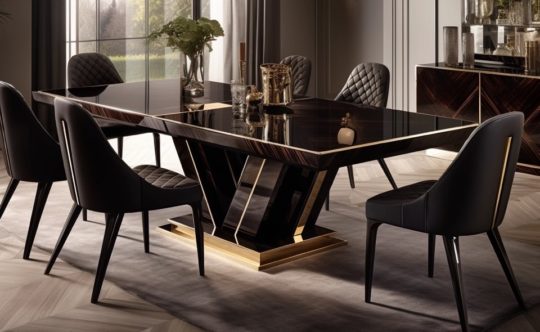‘Xin chào’ as they say in Vietnam (that’s ‘hello’ to you and me). This is such a friendly country that it’s something you will hear over and over. Vietnam is a vibrant ribbon of land in the South China Sea, bordered by China and Laos in the north before snaking its way southwards along the eastern edges of Laos and Cambodia. Known for its beautiful beaches, lush vegetation and stunning scenery, it is also a country of bustling cities, dynamic street life, exquisite food and several thousand years of history. Emerging from its more recent troubles, Vietnam balances its French colonial past with Chinese influences and a cool, urban culture all of its own. Ancient pagodas sit alongside sleek bars and luxury hotels, and there’s always time for a kerbside coffee.
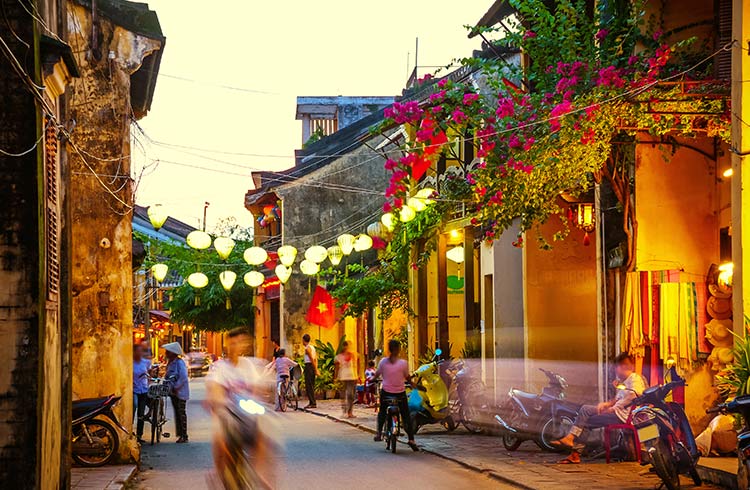
Affordable Luxury
For many of us, Vietnam is still a gem waiting to be discovered. As late as the mid 1990s, it remained hidden away, keeping the world at arm’s length. In the last 20 years, however, it has opened its arms and its heart to the rest of the world. Now, it offers a tremendous range of activities, beautiful cities and quiet retreats to suit all budgets. As an emerging destination, you can enjoy the ultimate in luxury at unbelievably affordable prices. The Vietnamese people are open, warm and friendly, with deeply-rooted traditional values. Visitors are made to feel welcome and service is always delivered with a smile.
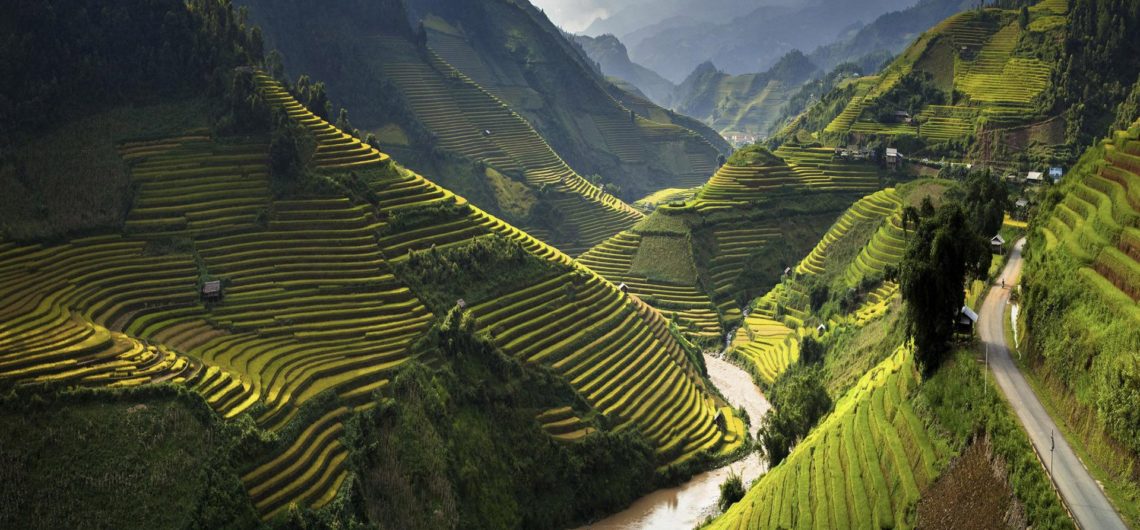
Vietnam from North to South
Vietnam is a very long, narrow country. It is 1025 miles from north to south, yet only 30 miles wide at its narrowest point. The coastline stretches an amazing 2140 miles and distances between places can be deceptive. Although foreigners are now permitted to drive in Vietnam with an International Driving Permit, it is not recommended. The sheer volume of traffic in cities, the endless honking of horns and the seeming lack of any rules of the road mean that even the most skilled and confident driver can find conditions difficult. Accidents on the main roads are a regular occurrence and rural roads are often bumpy and pot-holed.
However, good hotels and travel agencies throughout the country can organise car hire with a driver, who also acts as a guide. In fact, the larger car hire companies such as Avis will only rent out their cars with a driver. This is by far the best option if you want the freedom to plan your own itinerary. There is so much to see that we can only give you the briefest glimpse.
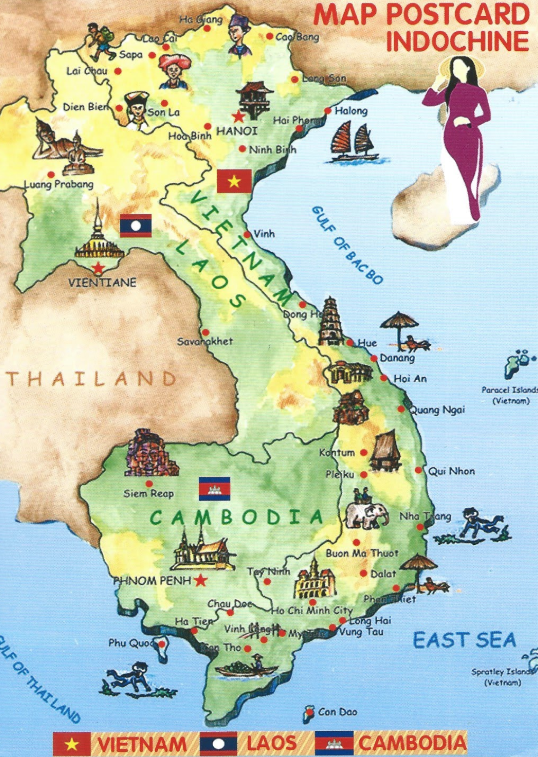
North Vietnam
Hanoi
Hanoi is Vietnam’s capital city. No visit to northern Vietnam would be complete without a stop off in Hanoi. Its jumble of architecture reveals layers of its past, with periods of French and Chinese occupation, post-war austerity and the race to catch up with the modern day. Its streets are a thriving mix of businesses, markets, cafés and shops, jammed with scooters, bicycles, cars and people, all accompanied by the constant cacophony of blaring horns. This is definitely a city to negotiate on foot.
The two main tourist areas are the French Quarter and the Old Quarter. The French Quarter is the place to go for beautiful French-colonial architecture, European-style boulevards, upmarket residential areas and high end shopping around the Opera House. The narrow alleyways and original streets of the Old Quarter are where visitors spend most of their time, haggling with street vendors, visiting the markets, dodging the traffic, and watching the locals practising t’ai chi, playing chess and breakfasting on noodles. With a rich food culture, you are surrounded by narrow houses selling delicious Vietnamese food for pennies. If you’re looking for a history hit, be sure to visit the remains of the Hoa Lo Prison, and the Ho Chi Minh Mausoleum.
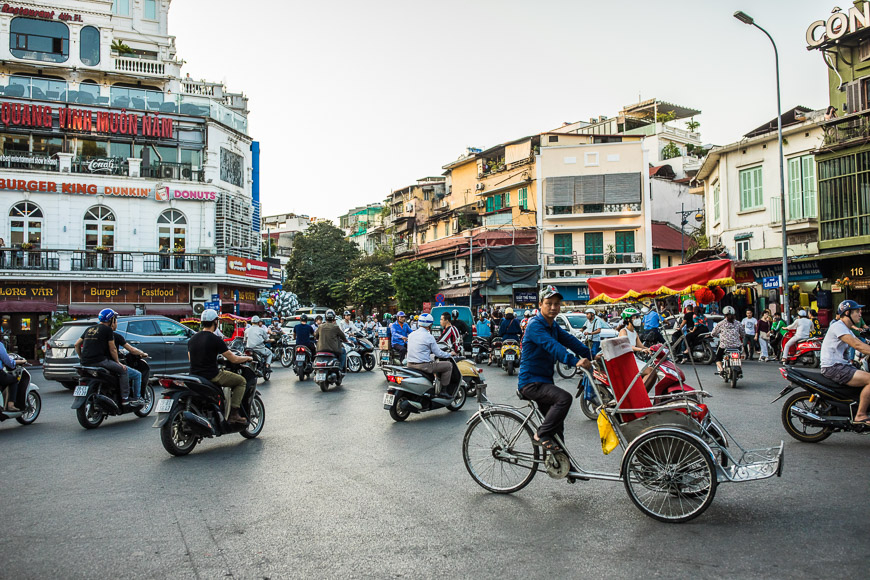
Between these two quarters lies Hoan Kiem Lake, an oasis of calm with the Ngoc Son Temple (Temple of the Jade Mountain) on a small, tree-sheltered island at the north end. One of the most-visited sites in Hanoi, the temple is reached by a striking scarlet bridge. This is the place to go when you’ve had enough of eating, drinking, shopping and traffic-dodging.
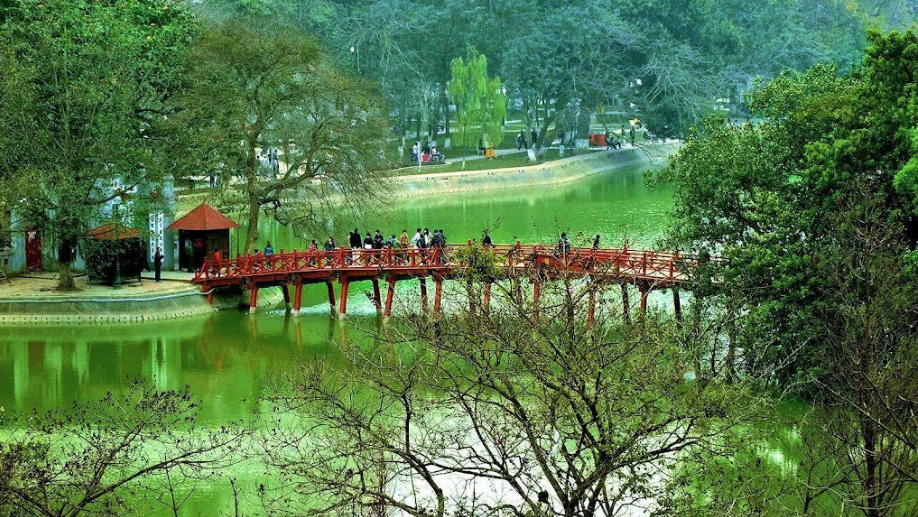
Hanoi – Vietnam’s Coffee Capital
Coffee is Vietnam’s national drink and Hanoi is, undoubtedly, the country’s coffee capital. It has its own coffee street, Trieu Viet Vuong – although the whole Hoan Kiem area is crammed with coffee shops so you never have to worry about finding one. Ask your hotel concierge for their favourite café recommendations. You may well end up sitting on a tiny plastic chair on the kerbside but the coffee will be to die for. This is true throughout Vietnam so even if you are not planning to visit Hanoi, you are still guaranteed a fantastic, if different, cup of coffee.
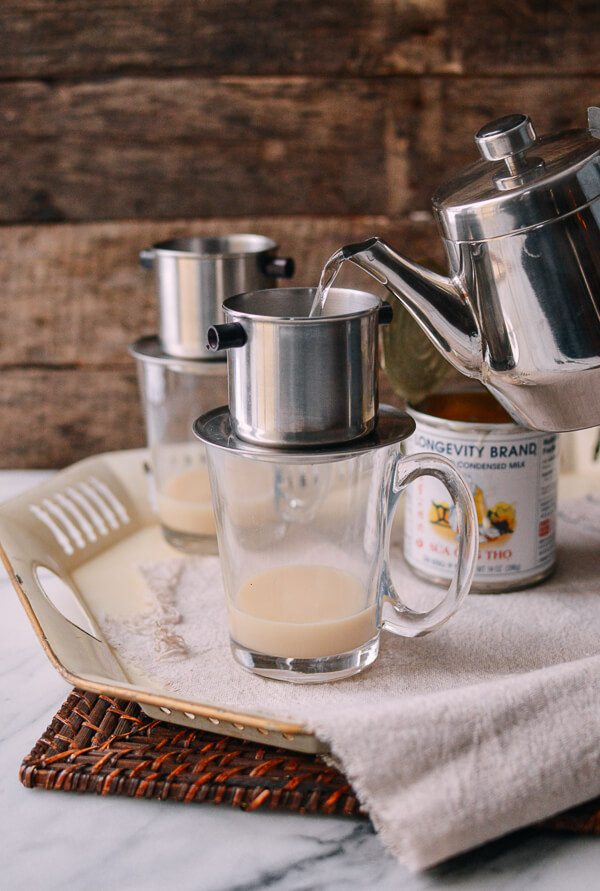
Central Vietnam
Hoi An
Declared a UNESCO World Heritage site in 1999, Hoi An is a living museum and possibly the most magical town in central Vietnam. Once a major 16th century trading post on the Thu Bon River, the influences of French, Chinese and Japanese merchants can be seen at every turn. Temples, bridges and pagodas are tucked between French colonial houses and wooden shop houses. Its Ancient Town and Riverside areas are easy to explore on foot or by cyclo (a bicycle-powered rickshaw), and old ladies in traditional conical hats offer boat trips in their wooden canoes. Hoi An is famous for its great food, shopping (look out for gorgeous, printed silk pyjamas), skilled tailors, friendly people and a quaint, cosy atmosphere. A few miles outside the town, sun worshippers will also find two spectacular beaches, making this the perfect destination for sun, sea, shopping and culture.
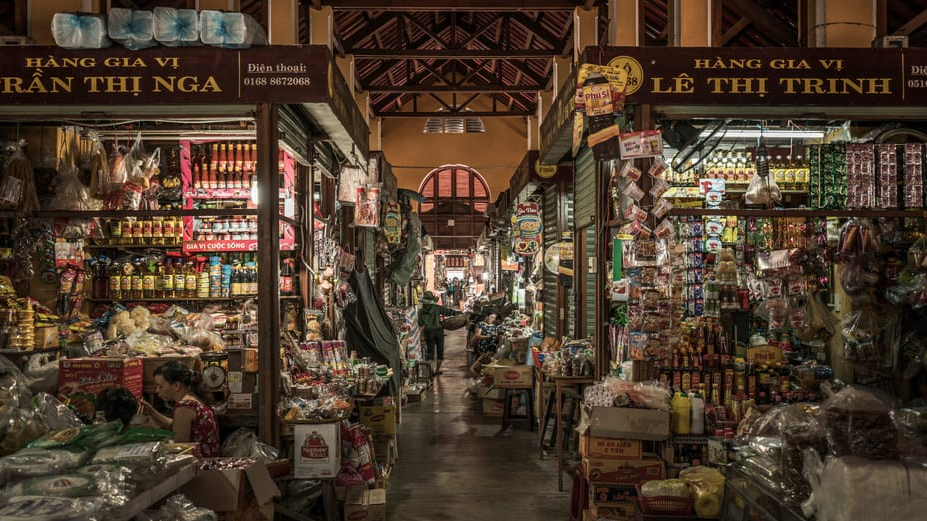
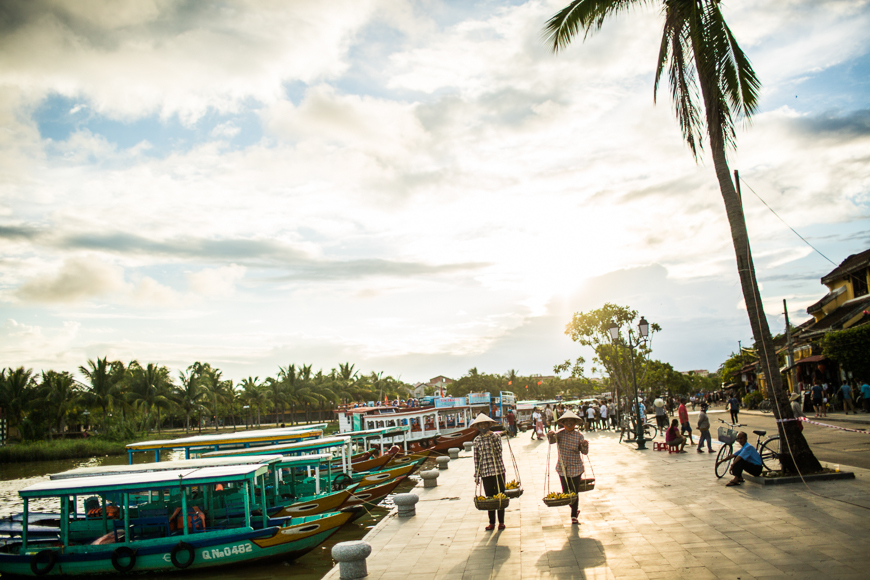
Hue
Another UNESCO-listed city, Hue is the place for visitors looking for a more peaceful retreat. Although it houses the Royal Palace of the Imperial City, it is nowhere near as busy as Hanoi in the north or Ho Chi Minh City in the south. One of the most popular destinations in central Vietnam, Hue is a moated citadel on the Perfume River, awash with traditional pagodas, carved dragon staircases and striking historical landmarks. You won’t find modern shopping malls or high end boutiques. Instead, you can explore a plethora of local markets and individual shops selling authentic handicrafts, artworks, antiques, silk painting, lacquerware and tailor-made clothes.
Nightlife is limited but is made up for by the wonderful array of local restaurants serving delicious food based on the banquets once presented to the royal household within the Imperial City. Until recently, Hue was a backpacker’s paradise. The only luxury place to stay was the wonderful La Residence Hotel but this has changed considerably over the last few years, with many ultra-luxe resorts opening their doors. With many lovely beaches just outside the city, this is a wonderfully enchanting place to visit.
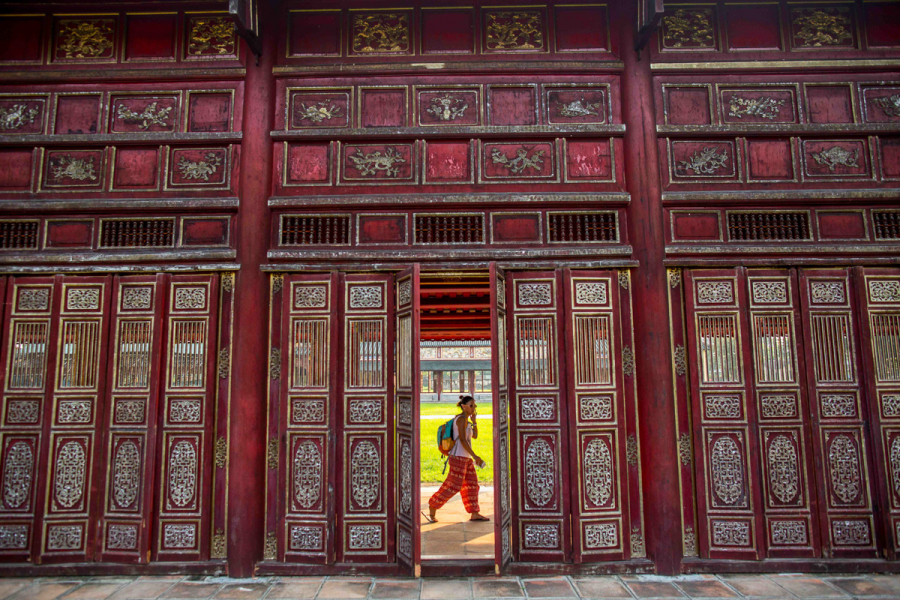
Dalat
Tucked away in the central mountains, Dalat is much cooler than its seaside and city counterparts. The central market even sells knitted jumpers to ward of the chill of the Dalat evenings. This mountain resort was once a summer getaway for French colonialists who have left their mark with some very European architecture, manicured gardens, summer palaces and luxury hotels. The focal point here is definitely the Xuan Huong Lake but the whole area is an adventure destination in its own right. There are plenty of hiking trails through the pine forests, waterfalls to discover, plus opportunities for canyoning, mountain biking or golf.
If that sounds too strenuous, there are also fantastic wellness retreats, or you can take the train through some of the country’s most stunning scenery, encompassing traditional farms, tea plantations, pagodas and palaces. There is even a cable car to the Truc Lam Monastery. Dalat is an ideal combination of peace, luxury and adrenaline.
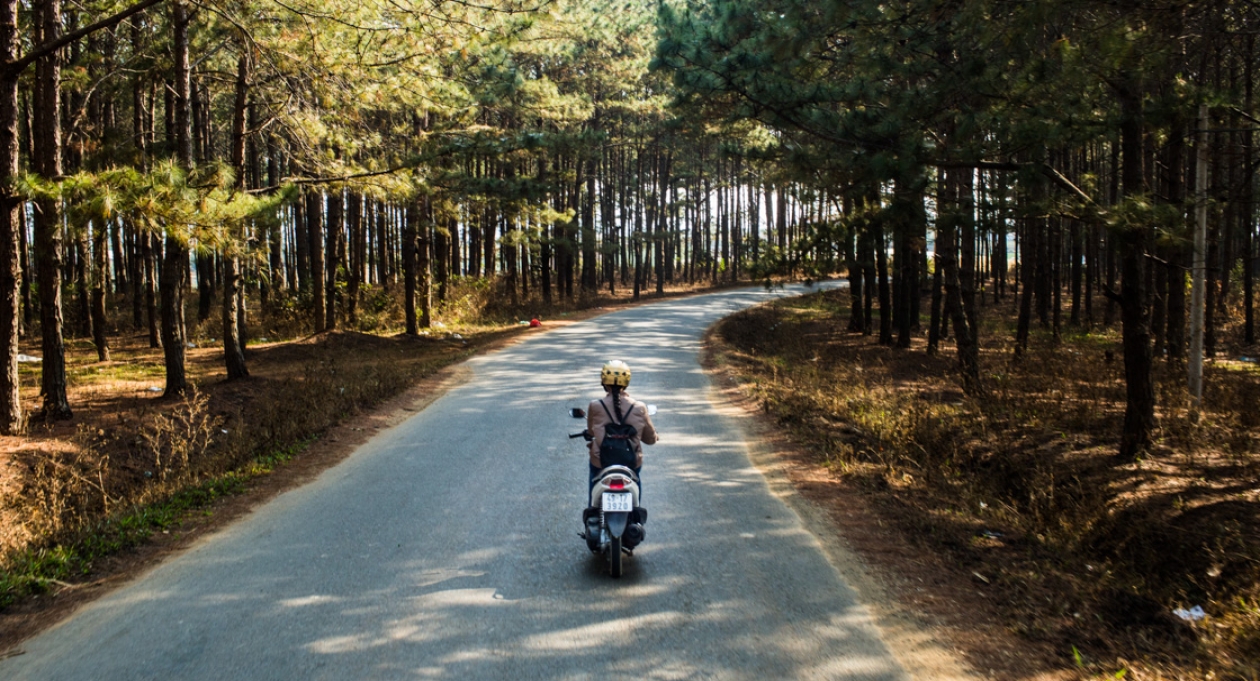
Southern Vietnam
Ho Chi Minh City
Formerly known as Saigon (and often shortened to HCMC), this is the business and financial centre of Vietnam. Residents were so reluctant to lose the original name that, although its official name is HCMC, the city centre is still known as Saigon. It is a noisy, bustling city jam-packed with people, mopeds and culture. Its history spans many hundreds of years, evidenced by its French colonial architecture, Buddhist temples and pagodas, set against soaring skyscrapers and traditional markets.
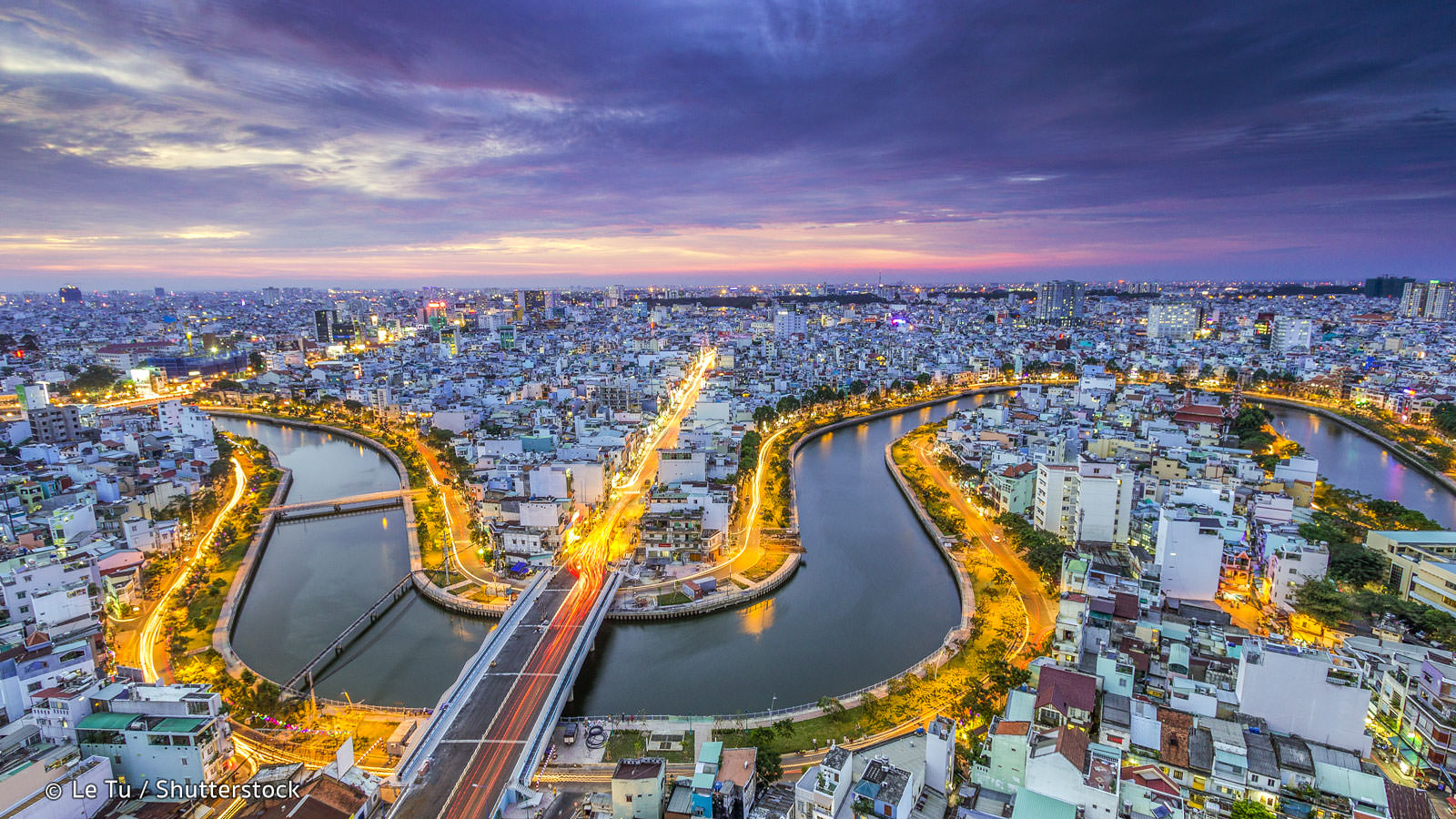
This is a big city and not easy to negotiate entirely on foot. The best way to get around from one district to another is by motorbike taxi. The original moto taxis are Xe Om (literally ‘hug the driver’). They are all over the city and will call out to tourists so it’s easy to find one. Be prepared to haggle over the price as they will always start high. It helps if you know the normal taxi fare – try to negotiate down to about half of that (best of luck). Try to have small change with you as well, otherwise you risk having to negotiate again at the end of the ride when your driver has no change! Uber are now on the scene too so, when you open the app in HCMC, you will have the option of car or moto taxi.
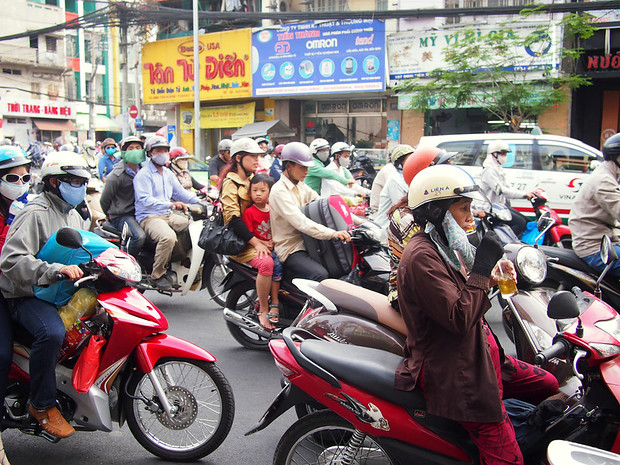
An Historic City
HCMC’s complex history means that it is probably best known for its war museums, such as the fascinating Cu Chi Tunnels, used by the Viet Cong during the Vietnam war to take their enemies (South Vietnamese and US soldiers) by surprise. A very popular site, some of its more gory exhibits may not be suitable for younger children. However, the city is bursting at the seams with family-friendly things to do and significant historical sites to see. There is street food a-plenty as well as restaurants serving an eclectic mix of French, Chinese and Vietnamese food. Shops and markets sell a wide array of wonderful goods, from tacky to high end luxury. Remember to haggle. And, of course, coffee is an absolute must.

Hotels range from the budget to the luxurious; from small boutique gems to large, out-of-town resorts with every facility on offer. Standards of service are exceptional and nothing is too much trouble. HCMC is a cosmopolitan boiling pot of ancient and modern, noise and tranquillity. It is extremely good value and well worth visiting, if only for a couple of days.
Phu Quoc
Vietnam’s largest island, Phu Quoc sparkles in the Gulf of Thailand, just off the coast of Cambodia. While the northern half of the island is a national park full of lush forests and hiking trails, travellers worship this island for its 150 km of coastline. It boasts 20 pure white beaches, crystal clear waters and a wonderfully laid back atmosphere. With year-round temperatures of around 27˚ C and a dry season from November to March, it is a perfect winter sun spot for those of us in chillier climes. Days are spent sunbathing, snorkelling and diving amongst an amazing array of rare marine life. Evenings are for relaxing, enjoying the abundant fresh seafood and gazing at the stars. Oh, and there is also the world’s longest oversea cable car that travels 8 km from Phu Quoc island to Hon Thom (also known as Pineapple Island).
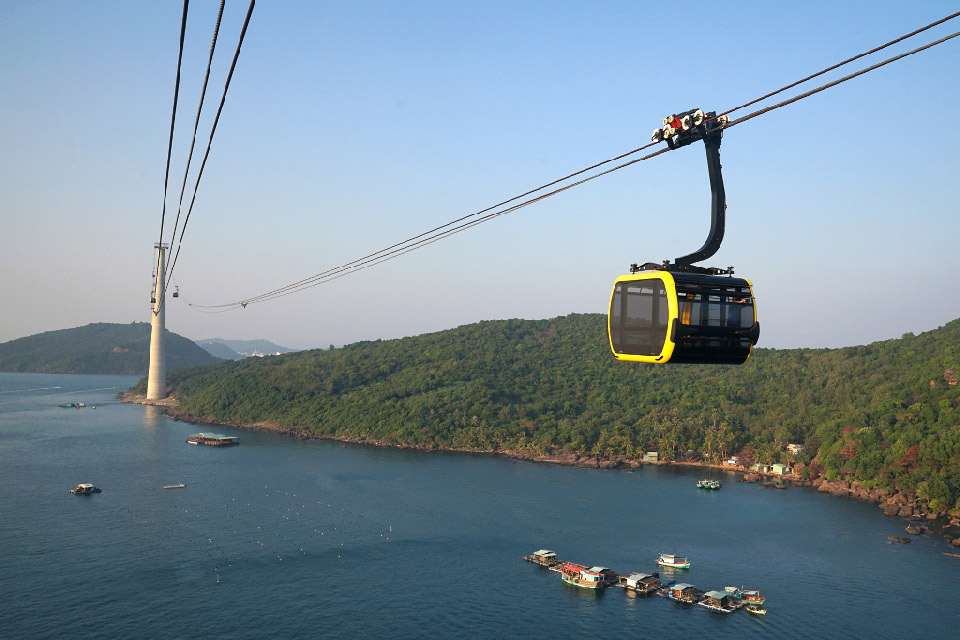
Until very recently, Phu Quoc was a backpackers’ stopover with a few hostels dotted around the island. However, a sudden crop of luxury hotels and resorts has sprung up along the coast, offering 5 star beachfront luxury. Everything is catered for: fine dining, health and wellness, activities, nightlife. Whether you are looking for a private retreat or a fun-packed family holiday, there is a luxury resort to match.

Claim to Fame
The island’s previous claim to fame has always been fish sauce, said to be the best in the world and awarded EU Protected Designation of Origin status. You can take a tour of some of the 85 fish sauce factories. If, however, you would prefer something slightly more fragrant, tourists can visit one of the many organic pepper farms, or check out the local specialities at the enchanting night market in the main town of Duong Dong.
Phu Quoc is also home to one of the most moving memorials of the Vietnam War. Phu Quoc Prison was the largest prisoner camp in southern Vietnam back in 1973. It is now a museum showing the history of the camp, the war and the lives of the prisoners, some of whom still visit today. All in all, Phu Quoc is a relatively undiscovered treasure but it will not stay like this for long. Make the most of it while you still can.

Vietnam Experiences
Vietnam is a country so rich in culture, scenery and a very different way of life that it’s difficult to narrow down the options. If we had to choose our must-do experiences, they would be these:
Halong Bay Cruise
A stunning natural wonder up near the Chinese border, Halong Bay is the iconic view of Vietnam that most of us have in our heads. Some 1600 craggy limestone peaks topped with lush forest soar above the emerald waters of the bay. It is one of Vietnam’s most visited sites and, unsurprisingly, every hotel and travel agency has a multitude of tours on offer. The most popular way to experience Halong Bay is on a cruise. This can be as simple as a local, no-frills half day tour in a boat packed to the gunwales with locals and tourists chatting, eating and singing karaoke.
We, however, would go for a 2 or 3 day tour aboard a luxury 5 star cruiser with superb cabins, space to relax in comfort on deck, sumptuous dining and magnificent sunsets. Being Vietnam, even the most luxurious cruises are great value for money. You can add extra activities into your cruise, such as rock climbing and kayaking, allowing you to visit some of the gorgeous little grottoes dotted around the lake. If you only manage one of our chosen experiences, it has to be this one.

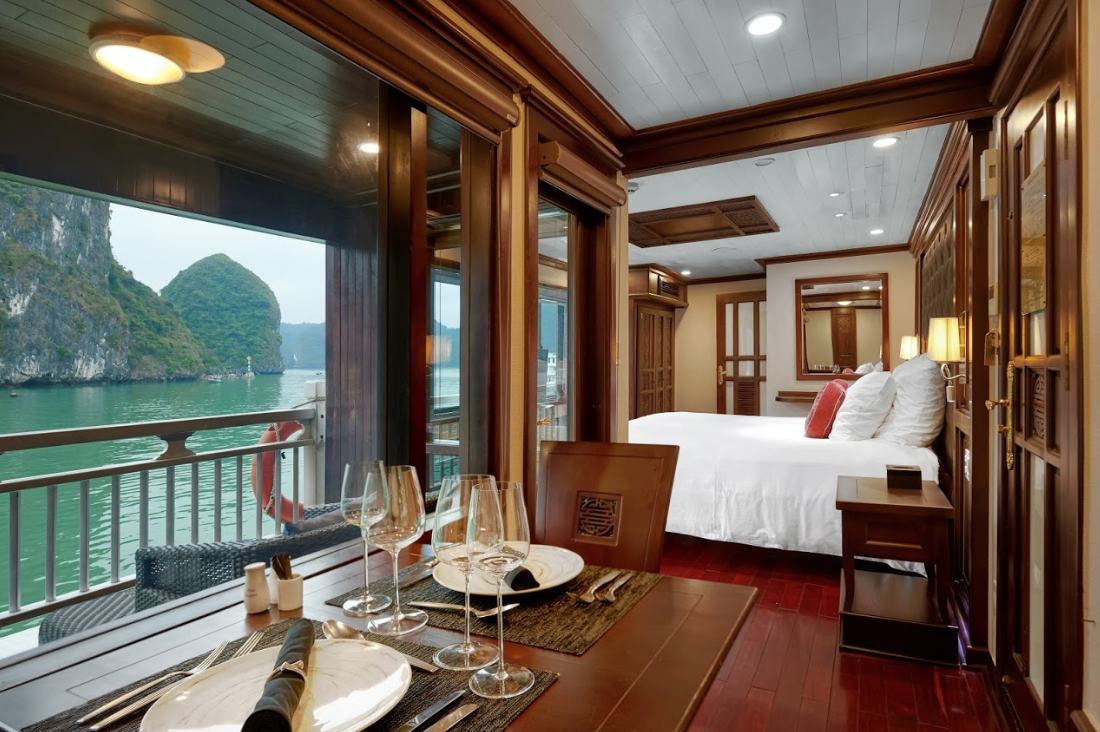
Cooking Classes
The Vietnamese are rightly proud of their cuisine and love to share its secrets with anyone who asks. Whichever part of Vietnam you choose as your base, you will find a selection of cookery classes. Even the most luxury hotels offer masterclasses with their talented chefs. Many will include a trip to the local market to buy supplies (and to practise the essential skill of haggling). Working in small groups with a friendly, enthusiastic local chef, you will be taught how to create a typically Vietnamese dish, each classmate making something different so you all learn several dishes. Classes are very popular all around the country. If your hotel doesn’t offer its own classes, ask your concierge for recommendations.
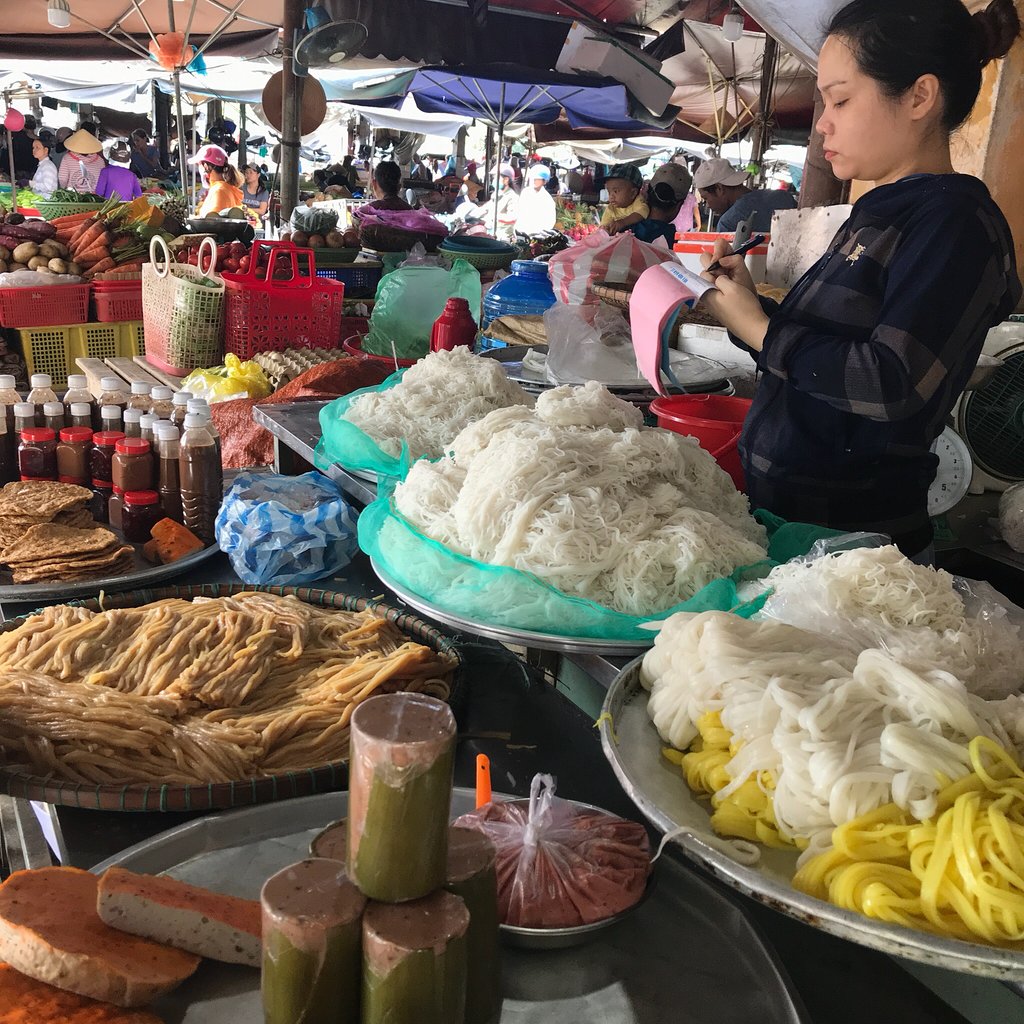

Vietnamese Coffee
You will find a coffee shop on every corner so there is no excuse for not trying an authentic, Vietnamese coffee. Be brave. Venture outside your resort and experience proper, local coffee. As we’ve already said, coffee is the national drink in Vietnam – but this doesn’t begin to explain just how important coffee is in everyday life here. Originally introduced by the French, the Vietnamese have taken coffee to their hearts and adapted it to their own needs, meaning that Vietnamese coffee has evolved to become a unique drink, far removed from its forbears.
Served hot or iced, true Vietnamese coffee is strong, rich and sweet thanks to the use of condensed milk. When the French first introduced coffee to the region, fresh milk was in very short supply so tinned, sweetened condensed milk became the norm. This milk shortage also led to the very curious yet authentically Vietnamese invention of egg coffee – strong coffee at the bottom with frothy, sweetened egg on the top. Don’t knock it till you’ve tried it! And you’ll need a spoon.

Wellbeing
Wellness is a way of life in Vietnam. Take your pick of tranquil wellness resorts in Danang and Nha Trang, step into a few yoga or meditation classes in Hoi An, or do a full detox at a mountain retreat in Dalat. Luxury hotel spas aim to outdo each other, bringing the spa experience to a whole new level with innovative concepts and an unrivalled level of service. Even in Vietnam’s bustling city centres, countless day spas offer professional massages and therapies at surprisingly reasonable rates.
Healthy eating is pure pleasure in Vietnam. All Vietnamese cuisine is based around the idea of balance. Ingredients are fresh from land and sea, prepared in exquisite, nourishing meals bursting with flavour. For a deeper journey into mindfulness, the ancient city of Hue beckons with Zen houses, peaceful pagodas, and a feeling of uninterrupted calm. Wherever you are staying, search out your own wellness experience. Whether it’s a simple massage, a day of pampering or a full week’s detox, you’re worth it!
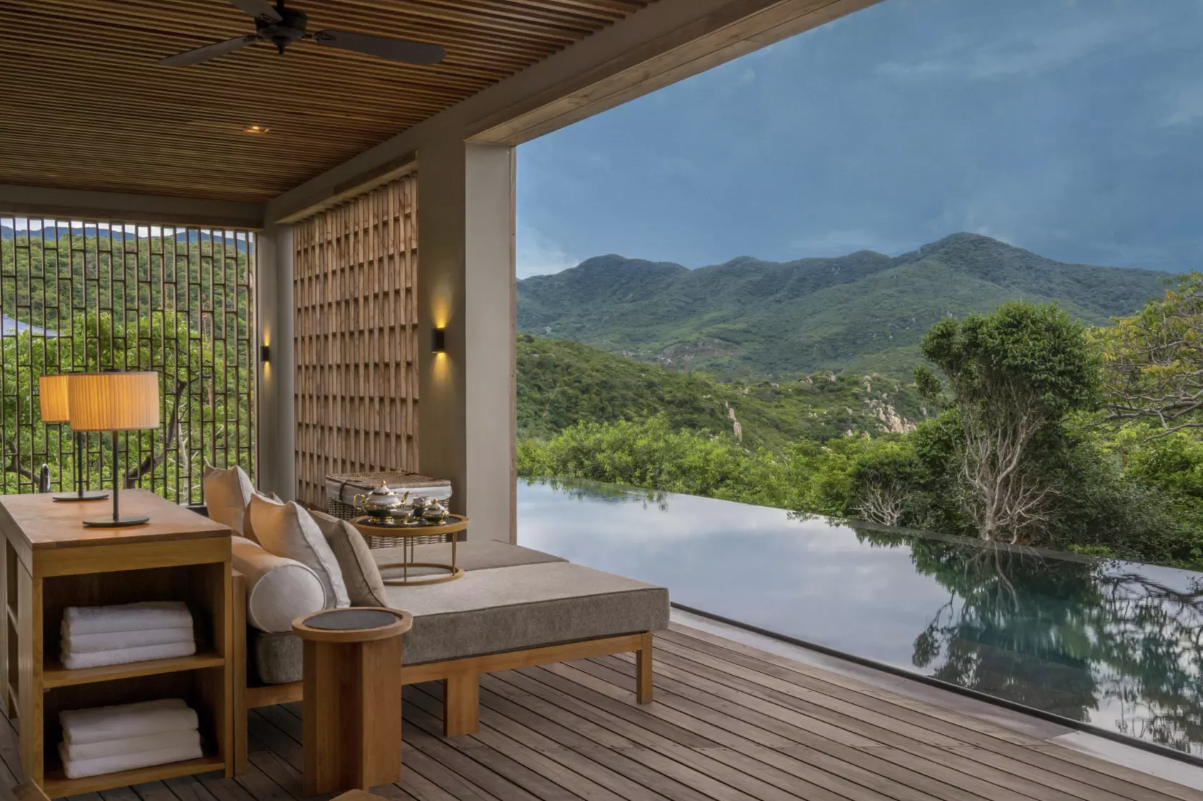
Food in Vietnam
With such a wide variety of influences, from its Chinese neighbours to its French colonial past, the cuisine of Vietnam varies by region. Food in the south tends to be spicier. In the north, there is a distinct Chinese flavour. But wherever you are, you are guaranteed a gastronomic delight. Vietnamese food is fresh, flavoursome and fantastic to look at.
Pho
Pronounced feu, this is what westerners think of as the Vietnamese dish. Flat rice noodles are served with slivers of beef or chicken in a hearty stock infused with star anise, clove and cinnamon. Originally from the north, the Hanoi version has a clear broth and is dressed simply with a squeeze of lemon and tiny slices of bird’s eye chilli. In the south, the broth is thicker and is served with a bouquet of fresh herbs and bean sprouts. Surprisingly (for us, at least), locals eat this for breakfast.
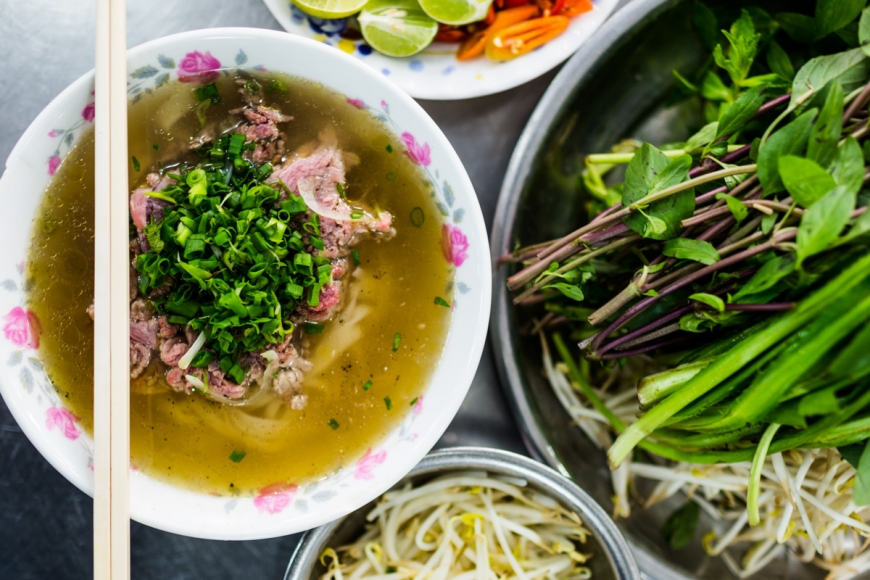
Banh Mi
The bread may have come from France, but banh mi is as Vietnamese as you can get. A baguette is spread with pâté, then crammed with pickled vegetables, coriander leaf, pork belly, pork floss (light, crispy, shredded pork) and cucumber.
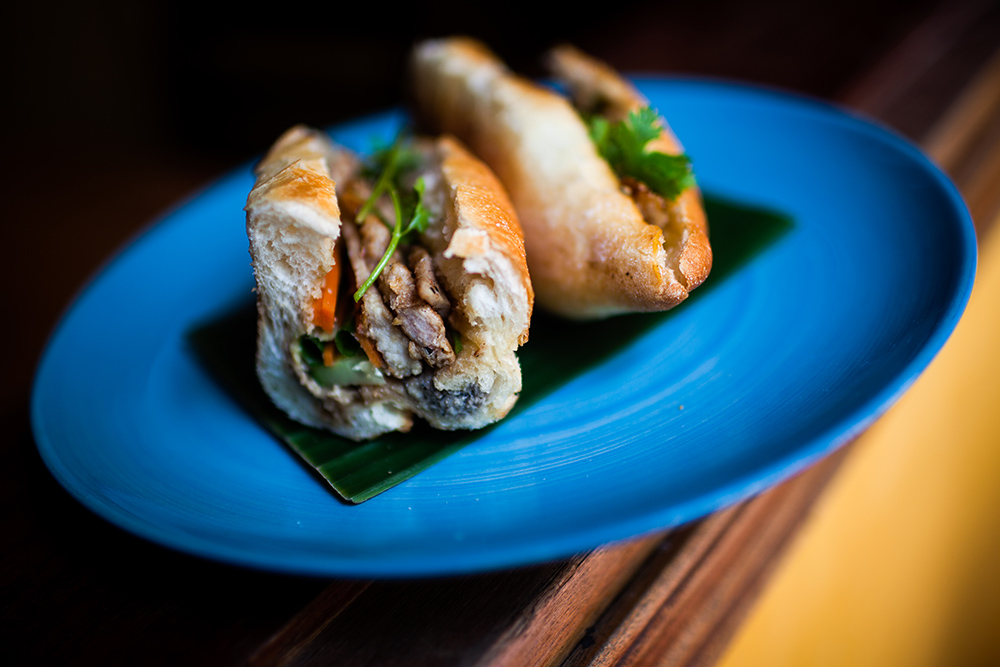
Bun Cha
This is the food of the Vietnamese middle class. The wonderful smell of grilled pork patties envelops you wherever you go. Expect a large bowl of broth laced with sugar and vinegar, a pile of little patties and grilled pork, a serving of rice vermicelli and a plate of fresh herbs.
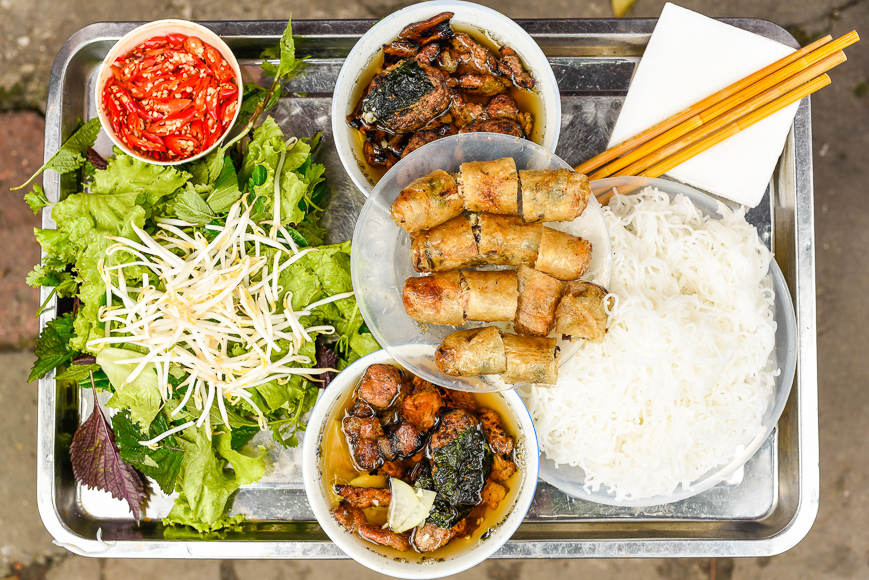
Com Tam
Not so long ago, Vietnamese farmers would eat the broken rice grains they could not sell. Com Tam, or broken rice, is a food staple for the everyday working class citizen. However, this meal of humble origins has evolved various, more decadent versions. The most popular has a generous portion of broken rice, topped with a caramelised grilled pork chop and a fried egg, then slathered with a mixture of chili, fish sauce, sugar and a drizzle of green onion oil. The whole thing comes served with a side of shredded pickled carrots, sliced cucumber, tomatoes and crushed pork crackling.
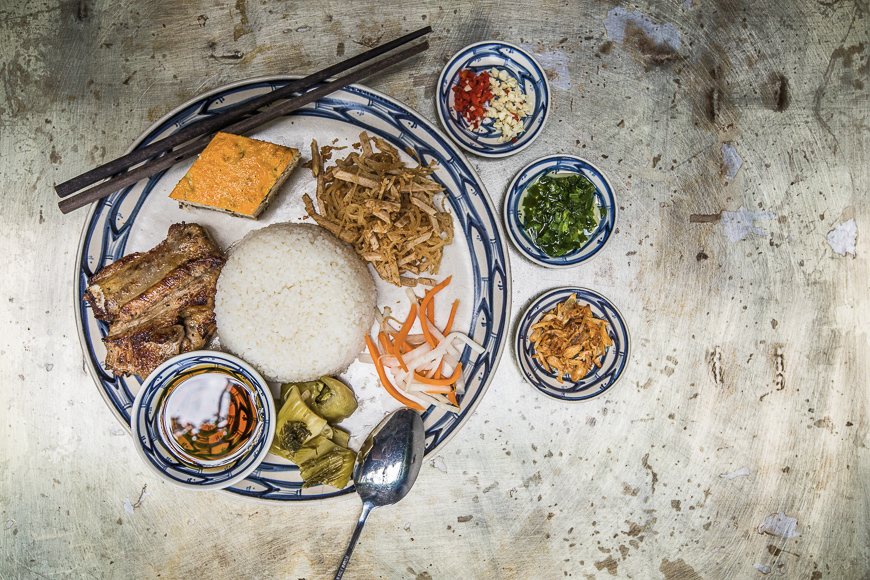
Banh Trang Nuong
This dish is an example of New Age Vietnamese cuisine, unrecognisable to older residents but a popular treat for the younger generation. Nicknamed the Vietnamese Pizza, it starts with a thin sheet of rice paper on a charcoal brazier. A quail’s egg is cracked over the sheet, then adorned with inexpensive toppings such as minced pork, green onion, pork floss and dried shrimp. Drizzled with hot sauce, folded like a taco, and voilà!
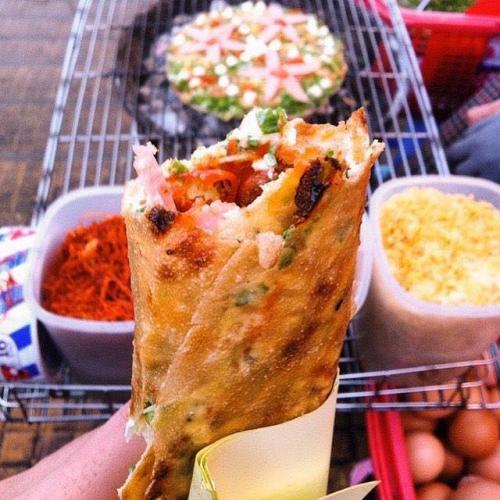
Bia Hoi
This is Vietnamese draft beer and quintessentially Hanoi. Low in alcohol (around 3%), it is marketed as the world’s cheapest beer. A glass will set you back around 20p. What have you got to lose?
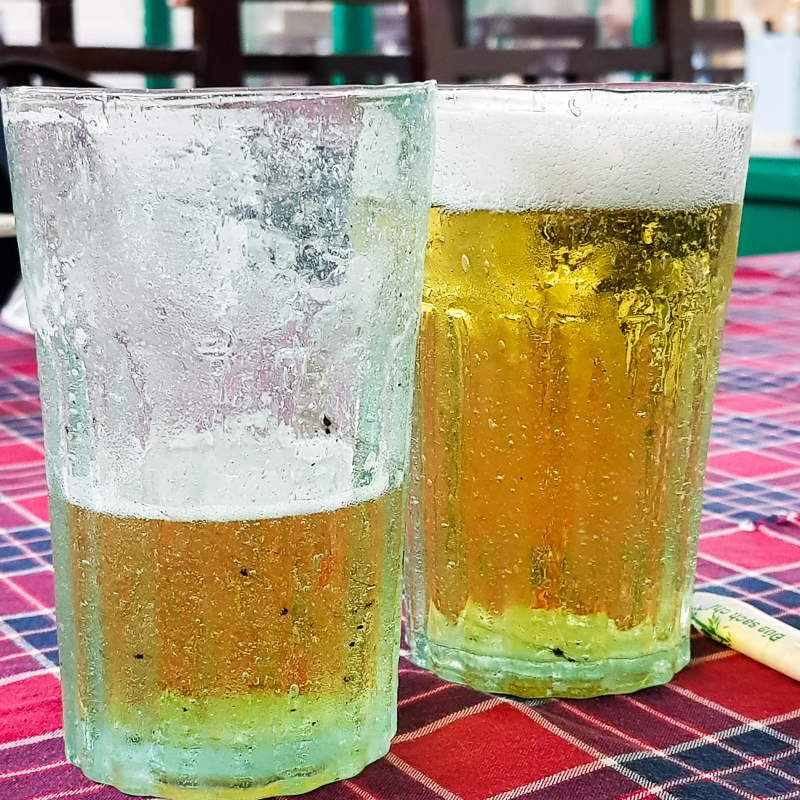
5 Star Luxury Vietnam Hotels
Service is everything in Vietnam. It is a way of life for the Vietnamese and nothing is too much trouble for an illustrious guest. The choice of 5 star, luxury hotels is ever-increasing, each one offering everything you would expect from such luxury accommodation – and often more – at a very affordable price. From boutique decadence to a mountain hideaway, to fully-fledged resorts with everything to hand, Vietnam has it all.
Sofitel Legend Metropole : Hanoi
Beloved of Noel Coward, Somerset Maugham and Charlie Chaplin, the Legend Metropole exudes old-school, colonial charm. In the heart of Hanoi’s Hoan Kiem district, it is an oasis in the centre of this bustling city. Restored to its former glory, you will still find old-style bellboys in pillbox hats, drier-than-dry martinis, and foie gras on the menu. With three distinct restaurants, there is something to suit every taste. Rooms and suites preserve the hotel’s colonial grandeur. Guests can browse the hotel’s own arcade of designer shops and a French-style epicerie. A sumptuous spa and fitness suite guarantee relaxation.
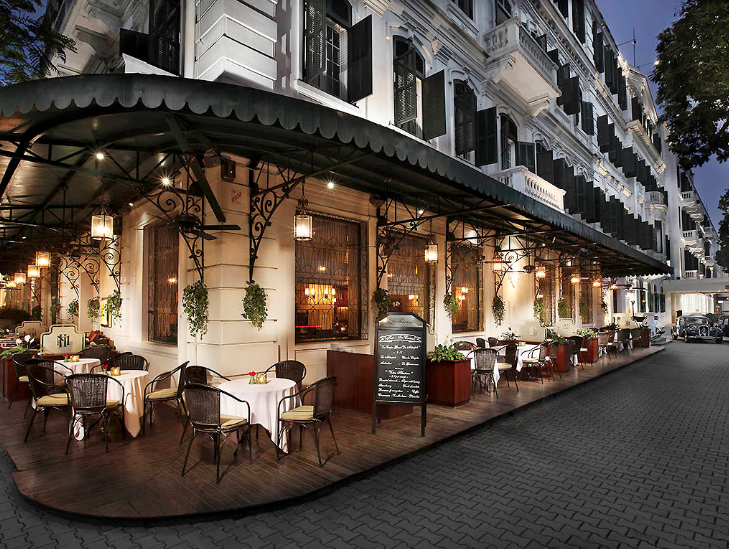
Four Seasons The Nam Hai : Hoi An
Set on a 25 mile stretch of powdery white beach, the location is out of this world. The hotel’s 100 villas are dotted along the beach, together with two enticing restaurants, three refreshing pools and an enchanting spa. A shuttle bus takes guests into the centre of Hoi An for anyone wanting the hustle and bustle, a blast of history or a spot of shopping. The Nam Hai has long been regarded as one of the finest hotels in Vietnam, with a level of personal service that is second to none. Plenty of complimentary activities and wellness options mean you will never be stuck for something to do. And when it all gets too much, lie back and take advantage of the cold towels and ice cream delivered direct to your sunbed.
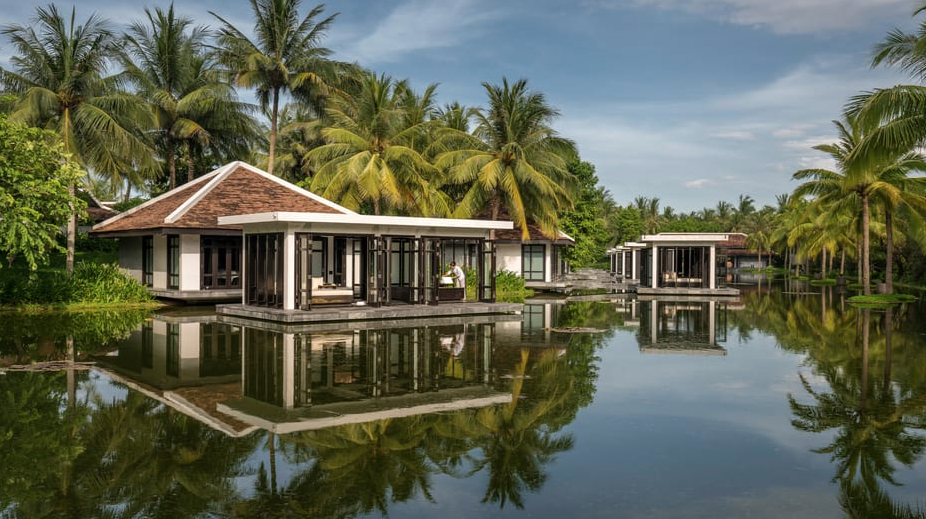
La Residence : Hue
Hue’s original luxury hotel. Set on the Perfume River, La Residence is a distinctive art deco treasure. Built in 1930, the original art deco mansion now benefits from the addition of two complementary wings. Nestled among tropical gardens with a salt water swimming pool, the hotel also has a bar, pool bar and fully-equipped gymnasium. The restaurant offers an eclectic mix of western and authentic Vietnamese dishes, with spectacular views of the Perfume River and the walls of the ancient citadel. There is even a delightful boutique just beyond the lobby with a lovely selection of local products, including fashions, art and exquisite handicrafts.

Six Senses Ninh Van Bay : North of Nha Trang
Set in a glorious bay amongst dramatic rock formations, we are talking low key but ultra-high style. The hotel’s 58 villas include thatched bungalows with private beach access, hillside hideaways and water villas built along the shoreline. Interiors are simple but supremely elegant, with everything you need for a luxury retreat. Dining is magnificent with international and Vietnamese favourites. Their chefs only use the freshest local produce and freshly-caught local seafood including lobster, king prawns and fish. The emphasis here is on wellbeing and re-balancing so don’t expect riotous nightlife. White sand and towering mountains put you in touch with nature and the range of activities is impressive. With the option of personalised wellness programmes, your stay can be anything you want it to be.
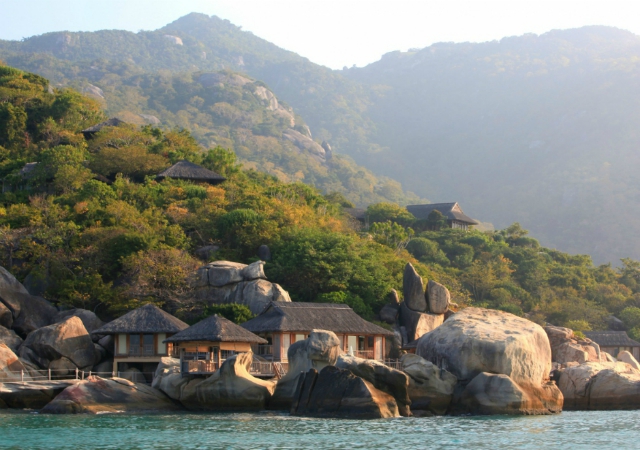
Amanoi : Vinh Hai (South of Cam Ranh)
A remote retreat set within a striking, rugged landscape on Vietnam’s southern coast, Amanoi feels a million miles away from civilisation. Set within 100 acres of the Nui Chua National Park, its 31 slate-roofed pavilions were inspired by traditional Vietnamese buildings. Straight lines, minimalist furniture and understated fabrics sit alongside warm woods and lush vegetation. Service and facilities are exceptional, centred around the Aman Spa with its lotus-filled lake, treatment suites and a host of wellness programmes and complimentary classes. Two swimming pools, tennis courts and a superb range of water sports will spoil you for choice. The two restaurants offer some of the very finest Vietnamese cuisine – fresh, light and packed with flavour. And if you want to learn to make them yourself, you can even arrange cooking classes with the chefs. This really is a place to escape from it all and focus on yourself.
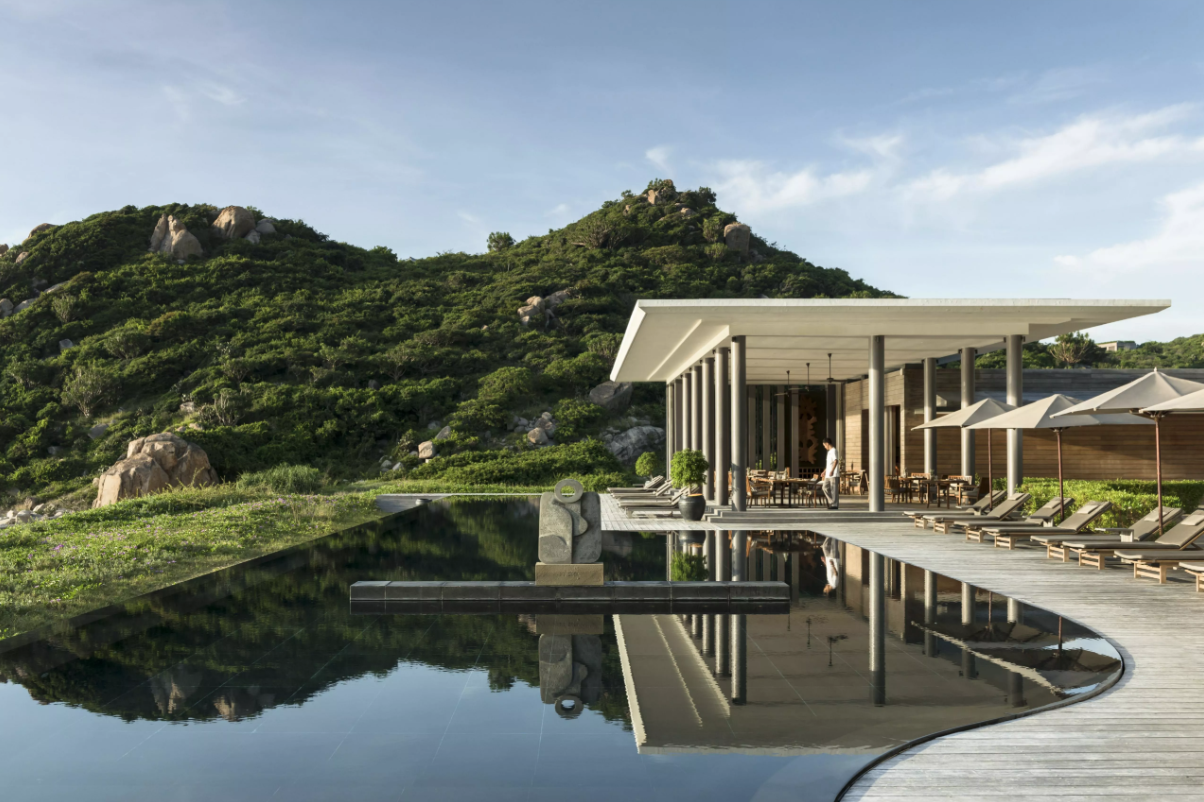
Park Hyatt Saigon : Ho Chi Minh City
Made famous in the film Good Morning Vietnam, this old colonial gem is a haven nestled in the heart of Saigon. You are a 10-minute walk from District 1’s most iconic landmarks – the Opera House, Notre Dame Cathedral, The Reunification Palace. Luxury shopping is on your doorstep, along with an endless choice of restaurants and cafés. Service is always friendly and efficient and the facilities are everything you would expect from such a celebrated hotel. The large outdoor pool is surrounded by landscaped gardens while the award-winning spa offers a wonderful range of treatments designed to pamper guests after a day in the bustling city itself.
Rooms reflect the old-school charm of Saigon’s heyday with hi-tech additions to bring them right up to date. The signature restaurant offers a delightful mix of French and Vietnamese dishes, with superb buffets, afternoon tea, French pastries, cocktails and a 1500-bottle wine cellar. This is a place to sit back and relax while the staff take care of your every need. Just what you need in a city as busy as this.
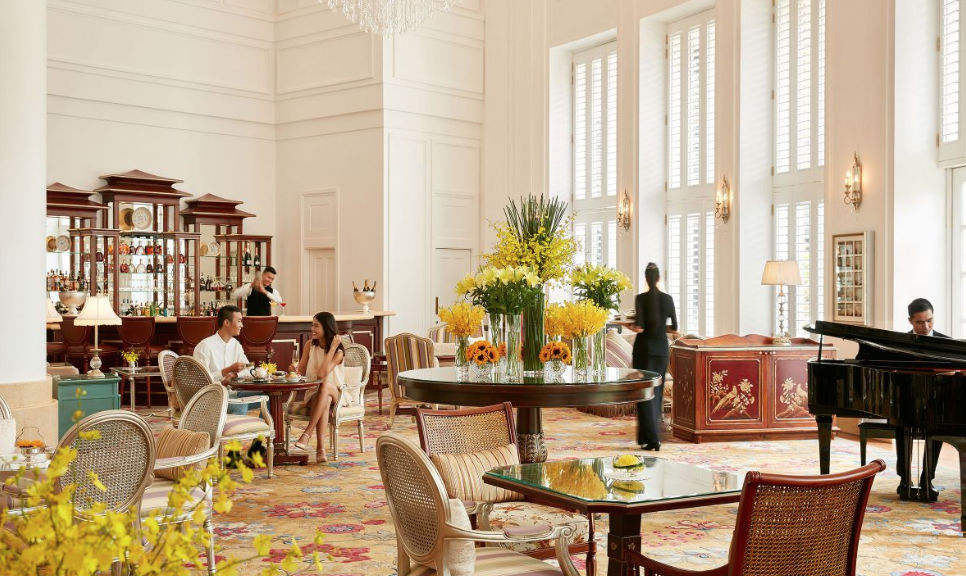
Premier Residences Emerald Bay : Phu Quoc
Brand spanking new and a fantastic way to enjoy the unexplored island of Phu Quoc. This is one of the handful of luxury hotels springing up on the island. It offers luxurious accommodation with views over the stunning white sands of Khem beach. The 2 restaurants and various bars serve a selection of light snacks and international dishes with a focus on fresh local fish and seafood, as well as Vietnamese specialities to delight the palate. Rooms are spacious, airy and opulent with spectacular views.
Everything you need for a luxury holiday is on site. Relax by the pool, take advantage of the numerous beach and water sports available, or venture further afield and explore this lovely, unspoiled island. You are only 10 minutes from the world’s longest over-water cable car and the friendly staff can help you organise trips to explore the island and everything on offer on the mainland. Colourful, contemporary and family-friendly, this is a modern, cosmopolitan resort – ideal when you want to get away from it all.

Have We Tempted You?
We hope this very brief insight into Vietnam has whet your appetite. There is so much to see and do here that we have barely scratched the surface. As a result, the whole team at Juliettes has been so inspired by Vietnam as a destination that we are all hoping to plan our own very different holidays soon; a couple’s retreat, a fun holiday with teenagers, a young-family-friendly break, an adventure holiday, full culture immersion or a foodie getaway. Anything is possible and affordable, 5 star luxury is always at your fingertips. Now, where did we put those passports?
Missing the Luxury Furniture?
Don’t worry. We thought we’d ease you gently back into the new year. We’ll be back soon with new blog posts featuring luxury furniture, designer lighting and everything else you need for your luxury lifestyle.
